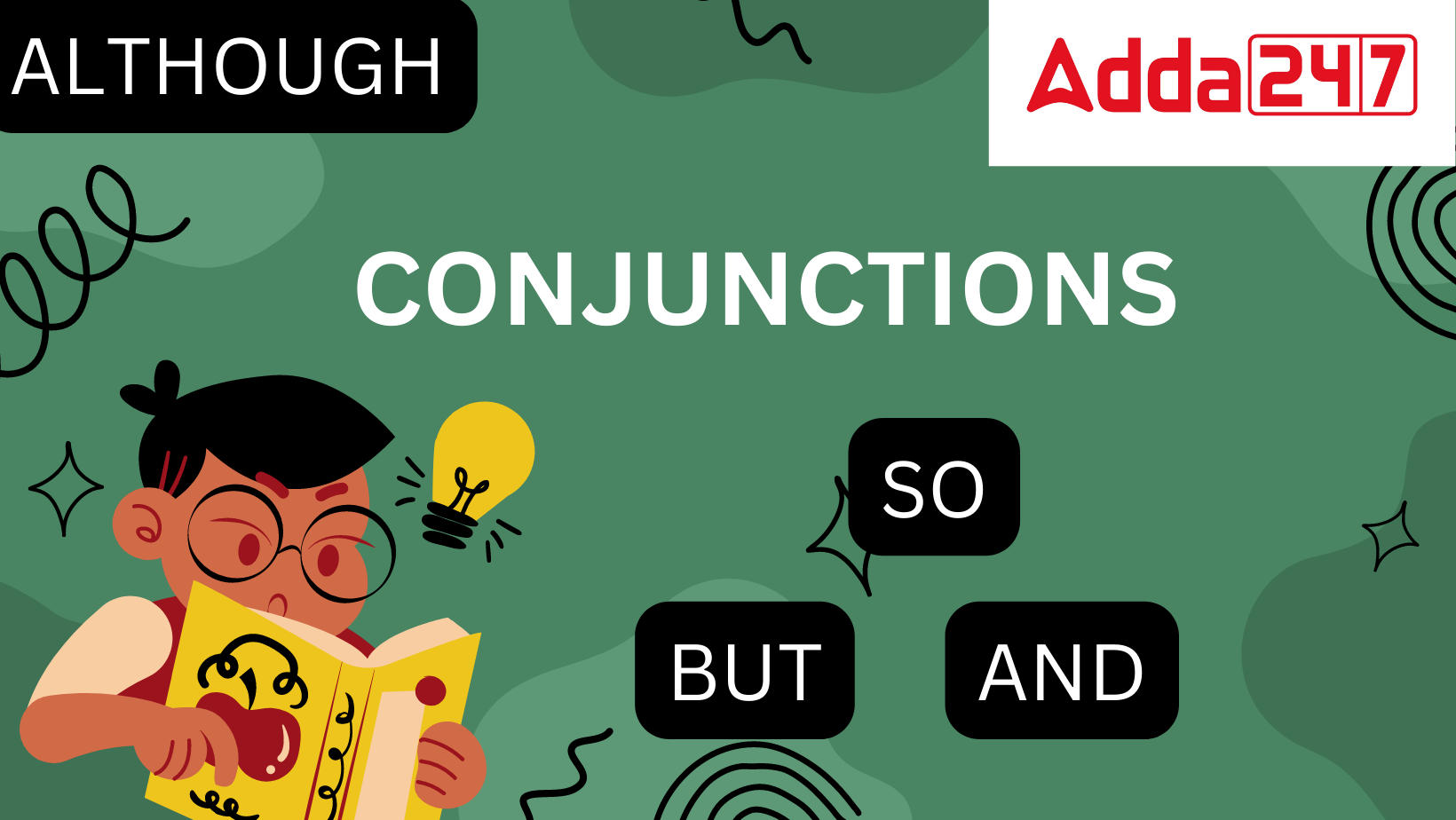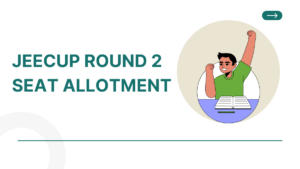Conjunction Meaning
A conjunction is a word that joins two or more objects, phrases, or clauses together. As conjunctions are used to connect phrases, they can also be referred to as connectors. If conjunctions are employed to link clauses, they might be found in the final portion of a sentence. When connecting things or phrases, conjunctions may appear at the start, middle, or end of the sentence, depending on the placement of the objects or phrases.
Meaning of Conjunction
A conjunction is a word like “and,” “but,” “while,” or “although” that joins words, phrases, and clauses in a sentence, according to the Cambridge Dictionary. A conjunction is described as “an uninflected grammatical structure that links together sentences, clauses, phrases, or words” in the Merriam-Webster Dictionary.
Conjunction Definition
According to the Oxford Learner’s Dictionary, a conjunction is a word that “joins words, phrases, or sentences, for example, and, but, or so.” A significantly different definition is given by the Collins Dictionary. Any word or set of words, excluding a relative pronoun, that joins words, phrases, or clauses is a conjunction, according to this definition.
Conjunction Types
A conjunction joins two or more objects, phrases, or clauses together. There are 3 main types of conjunctions in the English language.
- Coordinating Conjunctions: The conjunction that unites two parts with equivalent grammatical significance and grammatical rank is known as a coordinating conjunction. They can connect two independent clauses, phrases, adjective pairs, verb pairs, or noun pairs.For, and, nor, but, or, yet, and so are the seven coordinating conjunctions. The term FANBOYS makes it simple to recall these conjunctions.”So” can be used with any of these conjunctions in both coordinating and subordinating ways. It can connect two independent clauses as a coordinating conjunction and two unequal clauses as a subordinate conjunction.In simple words, it is used to join two independent clauses. Examples of coordinating conjunctions are for, and, nor, but, or, yet and so. Simple trick to learn coordinating conjunctions is to learn the word FANBOYS.
Conjunctions Rules
There are some rules that must be observed when using appropriate conjunctions and nouns in particular contexts:
a. A comma needs to come before the coordinating conjunction when it joins two separate sentences.
For example I wanted to go home, but my friend wanted to go gym.
b. There is no comma before a coordinating conjunction when it connects two sentences or words.
For example: I like to dance and swim.
- Subordinating Conjunctions: Here, the definition and use examples of the subordinating conjunction are given. These are the conjunctive constructions that assist in linking dependent and independent sentences. Since, since, however, as, although, while, and whereas are a few examples of common subordinating conjunctions. The adverbs can occasionally be be used as conjunctions, as in “until, after, or before.” In simple words it is used to combine an independent clause and a dependent clause. If, although, though, after, before, because, as if, unless, till, when, while, etc. are some examples of subordinating conjunctions.The dependent clause possesses the following two features:It can’t behave as if it were a sentence.A whole meaning is dependent on the independent clause.
- Correlative Conjunctions: These resemble tag-team conjunctions in certain ways. They come in pairs and are utilised in various locations.Examples of the corresponding conjunctions are either/or, neither/nor, not only/but also, whether/or, and not/but.Either a chocolate cake or a pastry will do.She doesn’t enjoy either tea or coffee.In simple words, it is used to join two phrases or clauses that are equally important to the meaning of the sentence. Correlative conjunctions include, not only, but also, either, or, neither, nor, whether, or, rather, or, if, then, etc.
Conjunction Examples
Here some examples of conjunctions are given below for the better understanding of conjunctions
- My brother and I visited Delhi last week.
- Do you take coffee or at least a cup of tea?
- I didn’t work because I was not well.
- She could dance but couldn’t sing well.
Commonly used Conjunctions
A list of commonly used conjunction is given below so that you may not get confused
| And | Or | Nor |
| Because | Still | For |
| Both..and | Whether..or | Or else |
| But | Yet | So |
| Either..or | As if | Neither..or |
| Even if | Rather than | So that |
| Not only..but also | As | When |
| Unless | In case | In addition to |
| Until | Before | After |
| Whereas | Though | Although |
| While | As soon as | If |
Starting a sentence with Conjunction
Many of us were taught in school that using a conjunction to start a sentence is incorrect, although this rule is untrue. A subordinating conjunction can start a sentence, as was already established, if the dependent clause appears before the independent clause. Additionally, using a coordinating conjunction at the start of a phrase is acceptable. It frequently works well to emphasise something. However, if you employ conjunctions at the beginning of too many sentences, the device will start to lose its impact.
संयोजक का अर्थ
समुच्चयबोधक वह शब्द है जो दो या दो से अधिक वस्तुओं, वाक्यांशों या उपवाक्यों को एक साथ जोड़ता है। चूँकि वाक्यांशों को जोड़ने के लिए संयोजकों का उपयोग किया जाता है, इसलिए उन्हें संयोजक भी कहा जा सकता है। यदि उपवाक्यों को जोड़ने के लिए संयोजकों का उपयोग किया जाता है, तो वे वाक्य के अंतिम भाग में पाए जा सकते हैं। चीजों या वाक्यांशों को जोड़ते समय, वस्तुओं या वाक्यांशों के स्थान के आधार पर, वाक्य के आरंभ, मध्य या अंत में संयोजन दिखाई दे सकते हैं।
sanyojan ka arth- Conjunction Meaing in Hindi
कैम्ब्रिज डिक्शनरी के अनुसार संयोजन “और,” “लेकिन,” “जबकि,” या “हालांकि” जैसा एक शब्द है जो एक वाक्य में शब्दों, वाक्यांशों और उपवाक्यों को जोड़ता है। मरियम-वेबस्टर डिक्शनरी में संयोजन को “एक अप्रभावित व्याकरणिक संरचना के रूप में वर्णित किया गया है जो वाक्यों, खंडों, वाक्यांशों या शब्दों को एक साथ जोड़ता है”।
Conjuction Meaning in Hindi
ऑक्सफ़ोर्ड लर्नर्स डिक्शनरी के अनुसार, संयोजन एक ऐसा शब्द है जो “शब्दों, वाक्यांशों या वाक्यों को जोड़ता है, उदाहरण के लिए, और, लेकिन, या ऐसा।” कोलिन्स डिक्शनरी द्वारा एक महत्वपूर्ण भिन्न परिभाषा दी गई है। इस परिभाषा के अनुसार, सापेक्ष सर्वनाम को छोड़कर कोई भी शब्द या शब्दों का समूह, जो शब्दों, वाक्यांशों या उपवाक्यों को जोड़ता है, एक संयोजन है।
Conjunction- QNAs
Que. What is a conjunction?
Ans. A conjunction is a word that joins two or more objects, phrases, or clauses together.
Que. What are the types of conjunctions?
Ans. There are three types of conjunctions: coordinating, subordinating and correlative conjunctions.
Que. What is subordinating conjunction?
Ans. Subordinating conjunction is used to combine an independent clause and a dependent clause. If, although, though, after, before, because, as if, unless, till, when, while, etc. are some examples of subordinating conjunctions.
Que. What is coordinating conjunction?
Ans. Coordinating conjunction is used to join two independent clauses. Examples of coordinating conjunctions are for, and, nor, but, or, yet and so. Simple trick to learn coordinating conjunctions is to learn the word FANBOYS.
Que. What is correlative conjunction?
Ans. Correlative conjunction is used to join two phrases or clauses that are equally important to the meaning of the sentence. Correlative conjunctions include, not only, but also, either, or, neither, nor, whether, or, rather, or, if, then, etc.









 DTE Maharashtra Polytechnic Merit List 2...
DTE Maharashtra Polytechnic Merit List 2...
 JEECUP Round 2 Seat Allotment Result 202...
JEECUP Round 2 Seat Allotment Result 202...
 YCMOU Result 2025 Out @ycmou.digitaluniv...
YCMOU Result 2025 Out @ycmou.digitaluniv...









